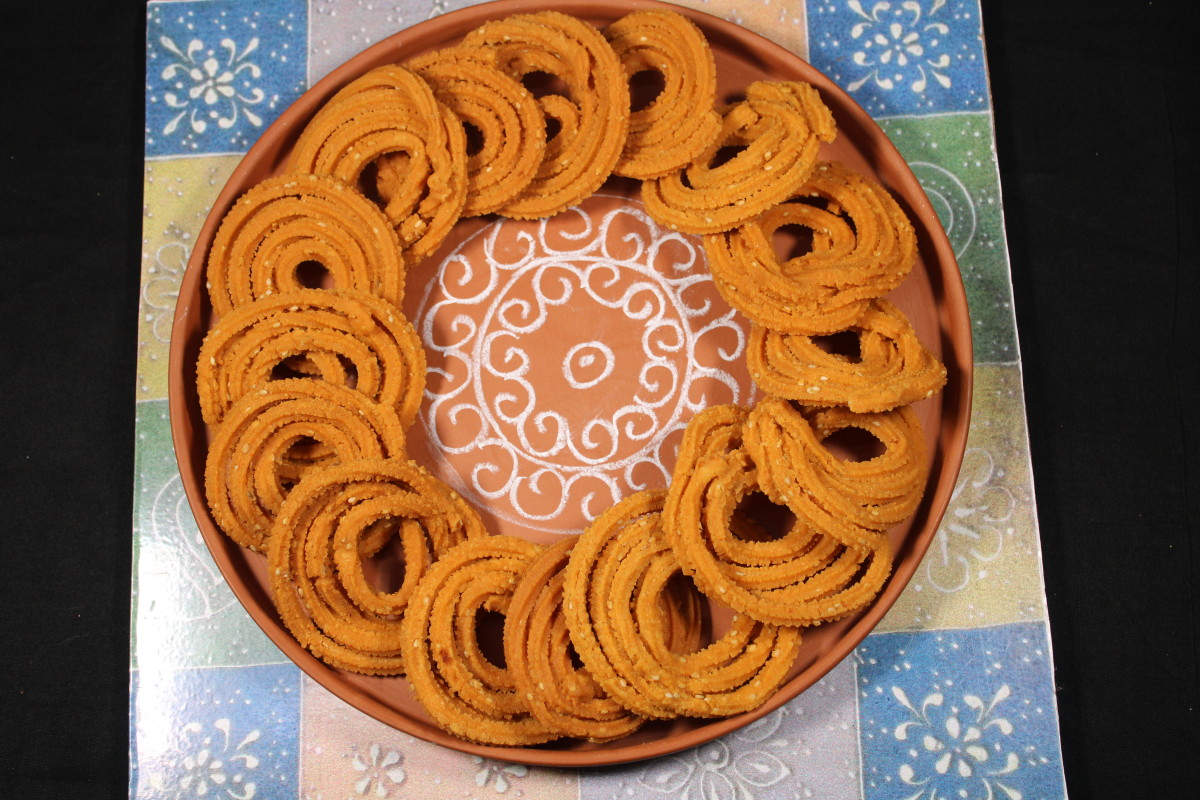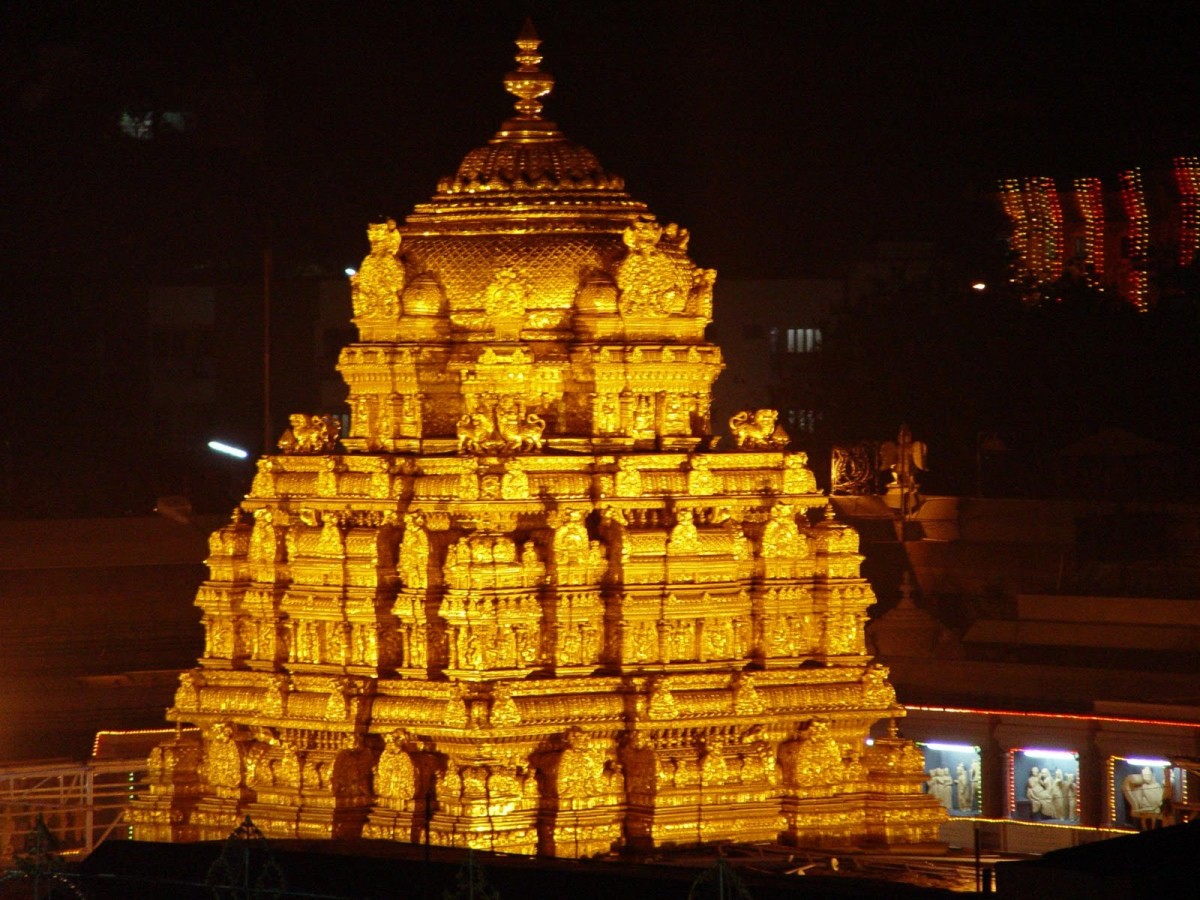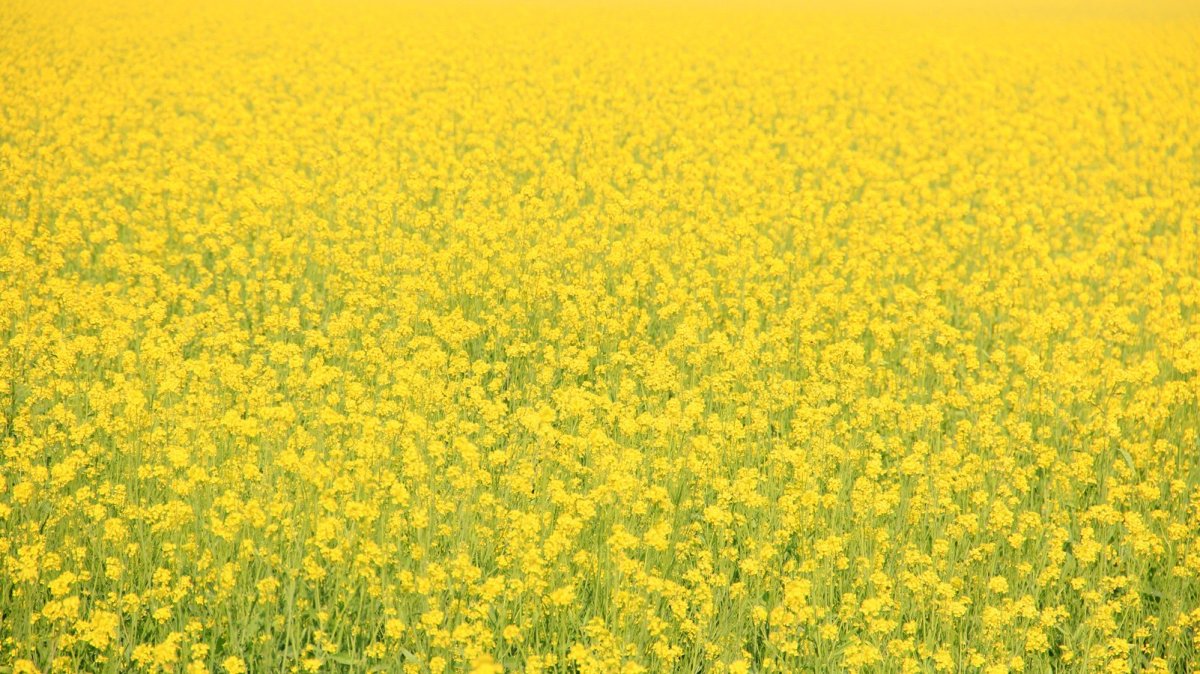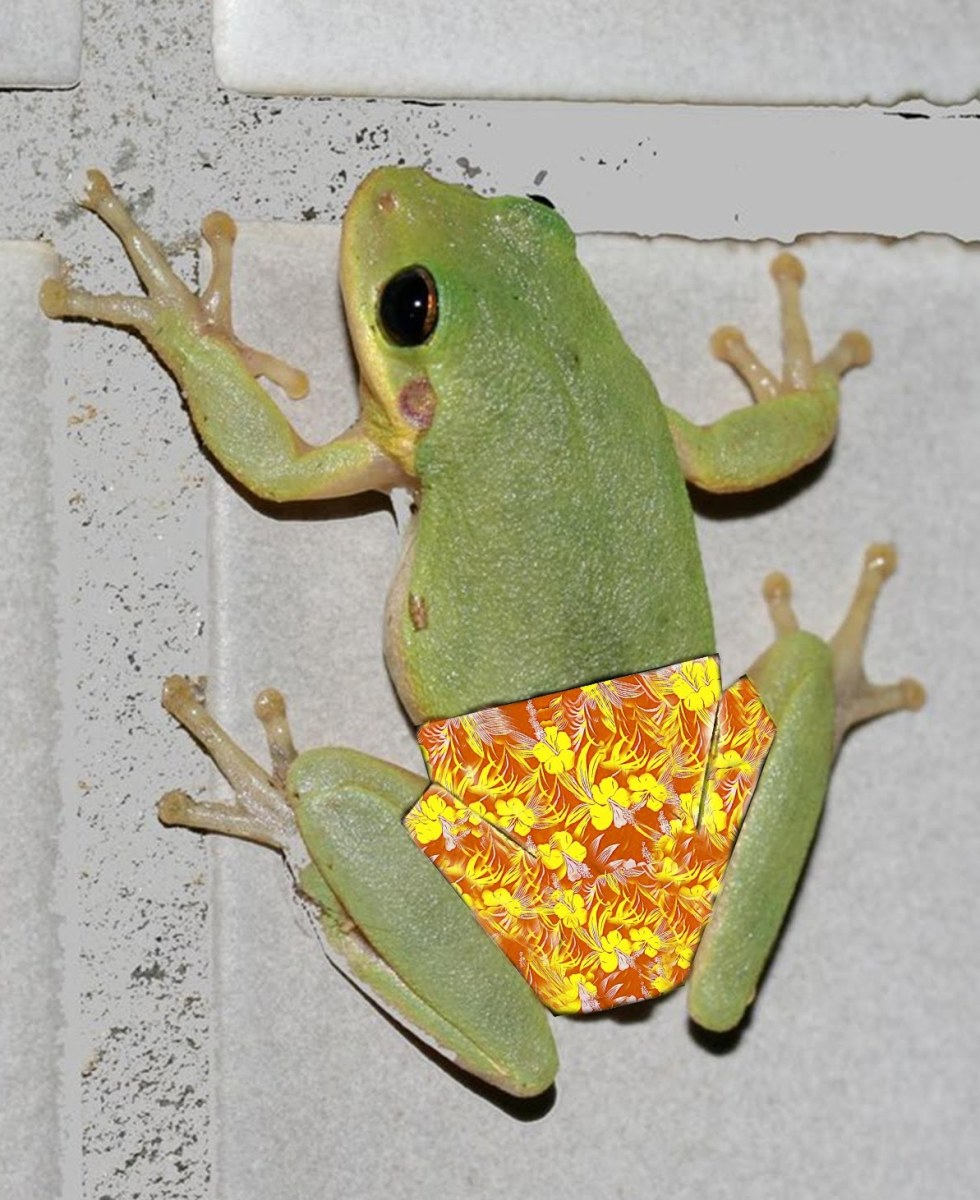UGADI-An Auspicious Festival Of Spring In South India

What Is UGADI?
UGADI is a combination of two words-Yuga(era) and Aadi(beginning) according to the ancient language of Sanskrit and Kannada languages. It simply means beginning of an era or a new year. According to the great Indian mathematician,Bhaskaracharya's calculations in the 12 th century,it is the first day of the new moon after the Sun crosses from South to North on Spring Equinox. It marks the end of all things old,and new beginnings are looked forward to. Ugadi festival heralds both Spring and Hindu New Year.
Ugadi is celebrated with great fervour in the Deccan region of India. In the states of Karnataka and Andhra Pradesh,it is called Ugadi and in Maharashtra it is called Gudi Padwa. Ugadi day is therefore celebrated the next morning with the beginning of the sunrise which marks the beginning of the new year. The onset of spring also brings new leaves,shoots,fragrant and bright flowers,luscious fruits thus signifying new life. Growth, wellbeing and prosperity are signified by the vibrancy of new blossoms all round.
The mildly fragrant jasmine flowers are in full bloom and are strung together to be used to decorate hairbraids,and over doorways and offered as garlands for pujas(hindu rituals).The lillies-pink,red and white are everywhere.This is also the season for mangoes-orange and yellow, and melons-red and yellow.
Festivities include rituals and celebrations!Families get together to celebrate.
HAPPY UGADI
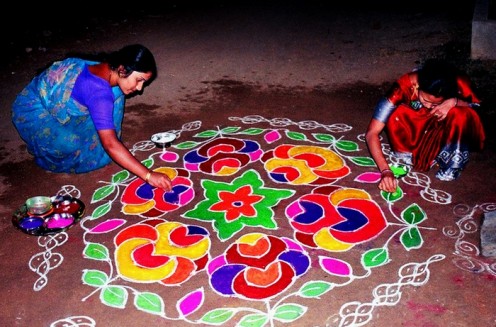
Preparations For Ugadi
All Hindus celebrate Chandramana Ugadi in the southern states of Maharashtra,Karnataka,and Andhra Pradesh.The festival food is the same and rituals same,the significance same but known by different names. Preparations begin one week in advance in most homes with Spring Cleaning and a fresh coat of paint for temples as well.
On Ugadi day,the Hindus wake up before dawn to see the sunrise and have an elaborate oil massage. Freshly picked neem leaves are immersed in hot water before taking bath.The front of the house gets a good wash and the lady of the house spends some time creating the perfect large rangoli(attractive floral pattern) for the occasion. She uses chalkpowder deftly between her forefinger and thumb to place specific number of dots on the floor and then joins then in different directions to form attractive patterns called rangoli.The spaces formed in beween are then filled with bright colours to make it vibrant. Mango leaves are strung together to form a "thorna" and hung across the top of the main doorway of the house,with a bunch of neem leaves at the ends. These are signs of welcome in a HIndu home. New clothes are worn and pujas are performed to the gods(family deity) in the puja room of their home. All prostrate before god and the elders in the home. The new Hindu calender (Panchanga)is opened and read for the first time in the new year.
Coconuts and mango leaves are important for the puja rituals.
Obbattu

Puliyogare Or Tamarind Rice

Crispy Ambode

Festival Food also known as Hubbada Oota
Pachadi (mixture) made with raw mango (tangy),neem flowers/buds (bitter),tamarind (sour), jaggery (sweet),green chilli/pepper (hot) mixed with salt is offered to the Gods during pujas and then offered to others,symbolising the essence of life with the four basic tastes to herald the Hindu New Year and wishing everyone happiness and all things that life offers including sadness. All these ingredients signify the new fragrances and freshness of the advent of Spring.
Traditional festival food prepared for Ugadi involves the whole family in the kitchen. Obbattu(a sweet flat bread made of refined flour and stuffed with a mixture of jaggery,coconut,cardamom and cooked tur dhal),payasa(a sweetdish made of milk and vermicelli,sugar),chitranna(cooked rice seasoned and flavoured with raw mango or lime juice),Vade(spicy,flat,round dhal crispies),bonda/bhajji(potato/capsicum/chilli batterfried),Kosambari(a type of salad),tovve(cooked and seasoned greengramdhal) are some of the festive foods. The family then sits down together for a meal served on individual banana leaves.
Below are a few delicious recipes that are made every Ugadi.
How To Make Obbattu
Tur Dhal -1/2 kg
Jaggery -1/2 kg
Coconut gratings-!/2
Allpurpose flour (Maida) - 1/2 kg
Cardamom powder - 1 tsp
Ghee - 1 tsp
Oil - 100 ml
Method:
- Wash and boil turdhal till it is 3/4 soft. Strain it using a strainer and spread on large plate to cool.
- Mix jaggery,coconut and cardamom powder and grind to a fine paste. If it is sticky, put it on a low fire and dry it up completely.
- Separately knead maida with 1/2 tsp of salt and water. It should be very soft. Add oil and knead it till oil is absorbed and make equal balls of above sweet mixture and kneaded maida.
- Roll maida balls into small pooris. Fill it with the sweet ball mixture.
- Make it into a ball and roll as for any flat bread with a rolling pin.Use a lot of oil otherwise it will keep sticking to the pin and you will have a disaster on your hands.It is best to use a bit of banana leaf for the purpose of placing the ball and then lightly using the palm and fingers of your hand to spread into a roti.This ensures that the mixture inside is stuffed evenly.
- Heat oil in a pan and roast it dry or with oil turning both sides.The obbattus should be golden and the aroma should waft through the whole house.That's Ugadi!
- Serve this with melted pure ghee.
How To Make Maavinakai Chitranna
- Cook rice till grains fall apart. Spread the rice on a plate and let it cool.
- Grind raw mango pieces from 1/2 mango along with ~ 2 tbsp of grated coconut, 4 green chillies and 1 tsp of mustard. Do not add water to grind just make a coarse paste.
- Heat oil in a big pan, add mustard, asafoetida let mustard pop. Throw in about 1/2 tsp each blackgram, chana dal and a big pinch of turmeric. Fry till the grams turn golden. Add red chillies and stir till the chillies pop it takes half a second. Add the coarsely ground mixture of mango paste to the oil. Remove from heat.
- Add rice and salt to the seasoning mixture and mix well. If mangoes are not sour add lemon juice at this stage. Garnish with coriander leaves.
How To Make Puliyogare
- Cook the rice till grains fall apart and cool spread on a large plate.
- Season lots of peanuts,curry leaves and mustard seeds in peanut oil.Add Puliyogare gojju(a paste made with tamarind juice,asafoetida,salt,jaggery,red chillies,sambar powder,simmered till a sticky paste forms).
- Mix this to the rice and serve.
Why Is Ugadi Considered Auspicious?
Pujas are performed to invoke and worship the hindu gods for health,wealth ,peace and prosperity,and success in every business venture. New ventures are said to be prosperous if started on this Ugadi day and this is why it is considered auspicious. People bring in new appliances to their homes,start new businesses.Old makes way for the new,making fresh resolutions to give up the bad and do only what is good. Man is to become wise and learn to emulate the gods in being selfless.
An important aspect of the celebrations is having a Kavi Sammelan (poetry recitation) in the evening as part of the cultural program for all people gathered. Poetry written for Ugadi or any other topic including politics are recited by budding young poets. Some visit temples and relatives in the evening to offer bevu-bella (neem & jaggery). This is done to offer good wishes to everyone in the hope that they will enjoy life to the fullest in the new year with a little of both happiness and sadness. Thus the arrival of spring and new year is celebrated filling the hearts of the people with joy and contentment even as the earth has burst forth her fragrant and richly coloured blossoms. YAKSHAGANA, a folk dance is performed by the troupe in several towns and villages to mark the occasion.
Ugadi Puja Being Performed At An Office Before The Business Begins
May Your Life Be Sweet, Sour And A Bit Bitter
Life is a mixture of various experiences-sadness, surprise, fear, anger, happiness, and disgust. Ugadi pujas are followed by eating a specific mixture of neem, raw mango, tamarind juice, green chilli and jaggery. This mixture, with all six tastes is called bevu bella in Kannada and Ugadi pachhadi in Telugu. The significance of these foods is as follows :
Neem-bitterness
raw mango-tang
jaggery-sweetness
green chilli-spice
tamarind juice-sourness
Wishing everyone and offering this bevu bella and eating it signifies having all these myriad experiences in one's life and being able to accept each equally. Enjoy life and all the experiences it offers! HAPPY UGADI !
What Is Rangoli?
WOULD YOU LIKE TO VISIT INDIA?
I Am Part Of The Hubmob



